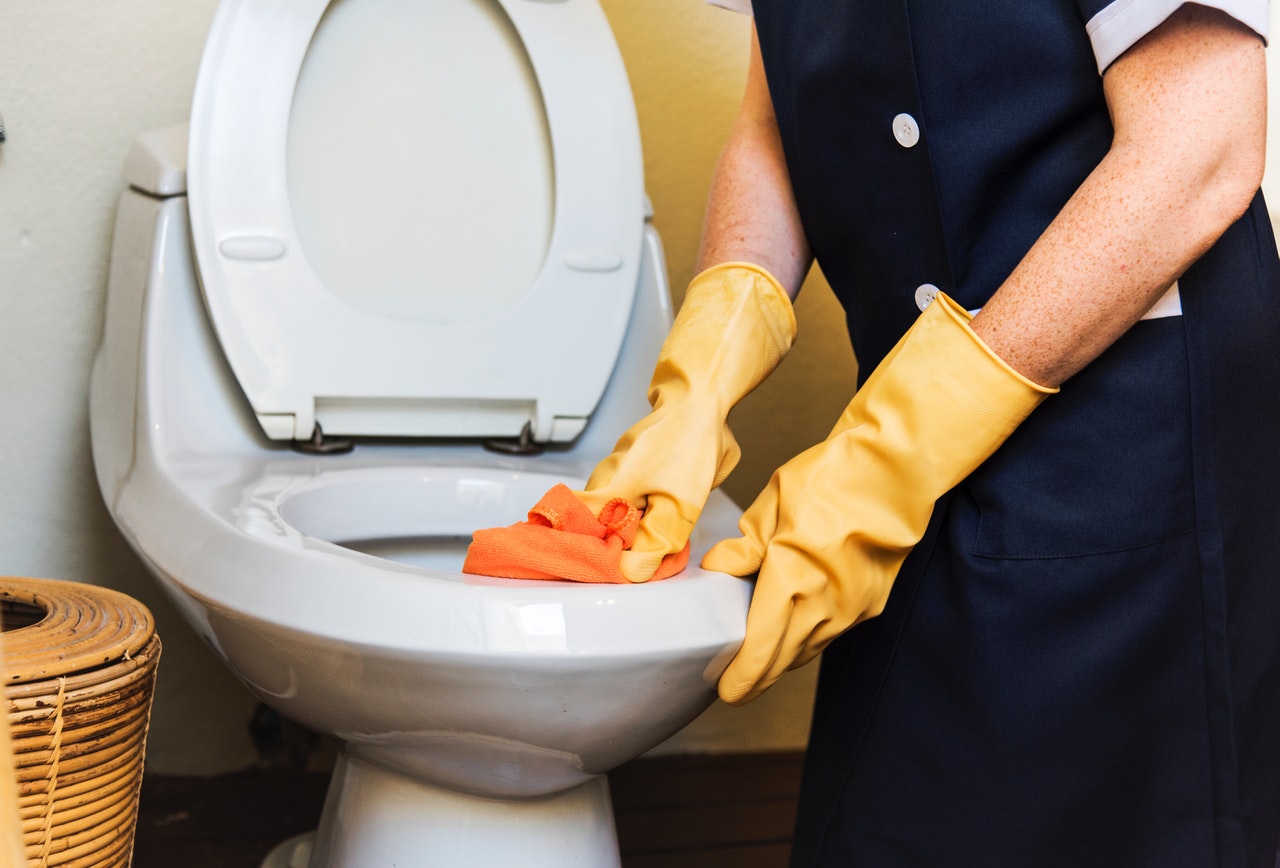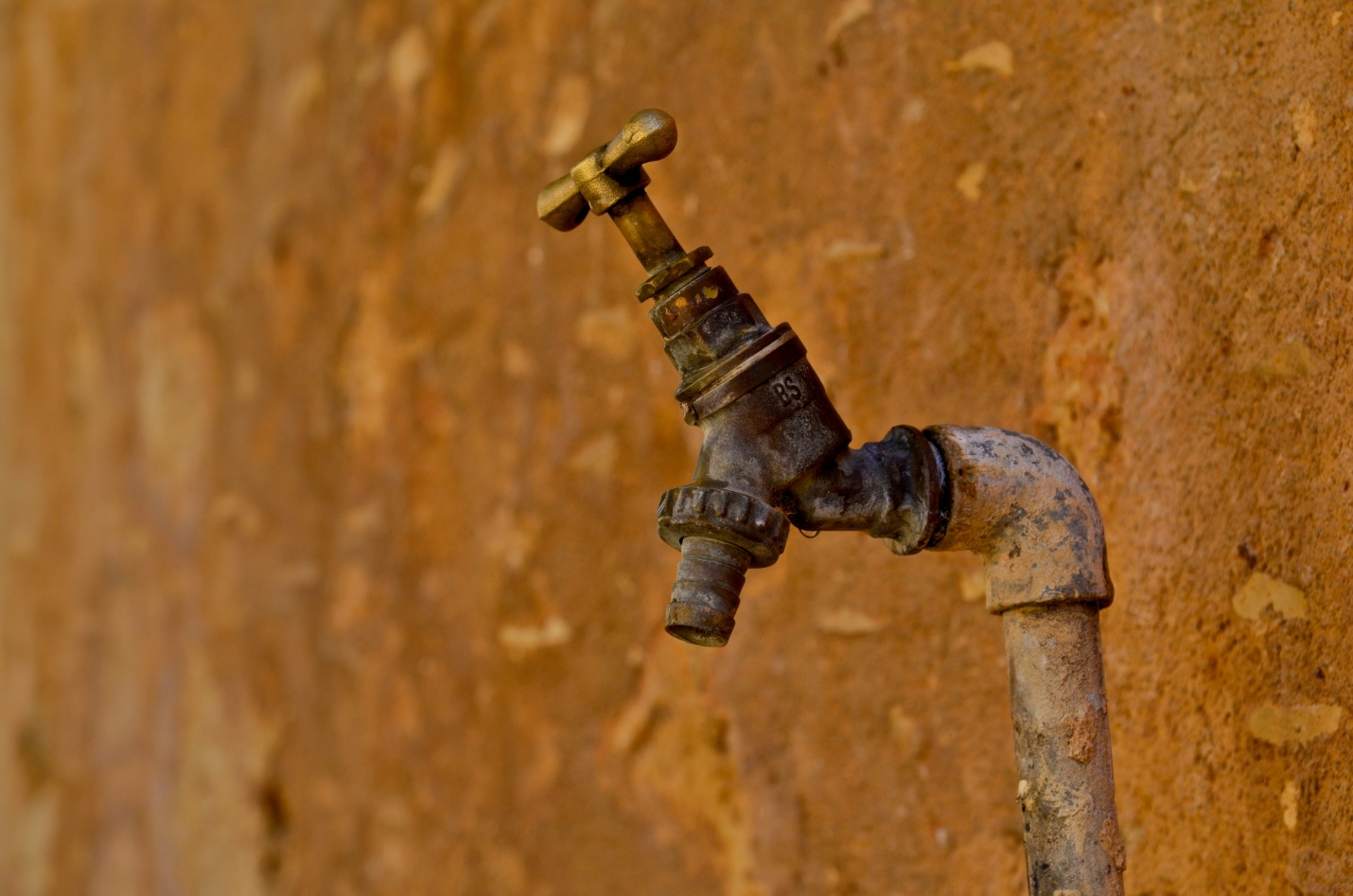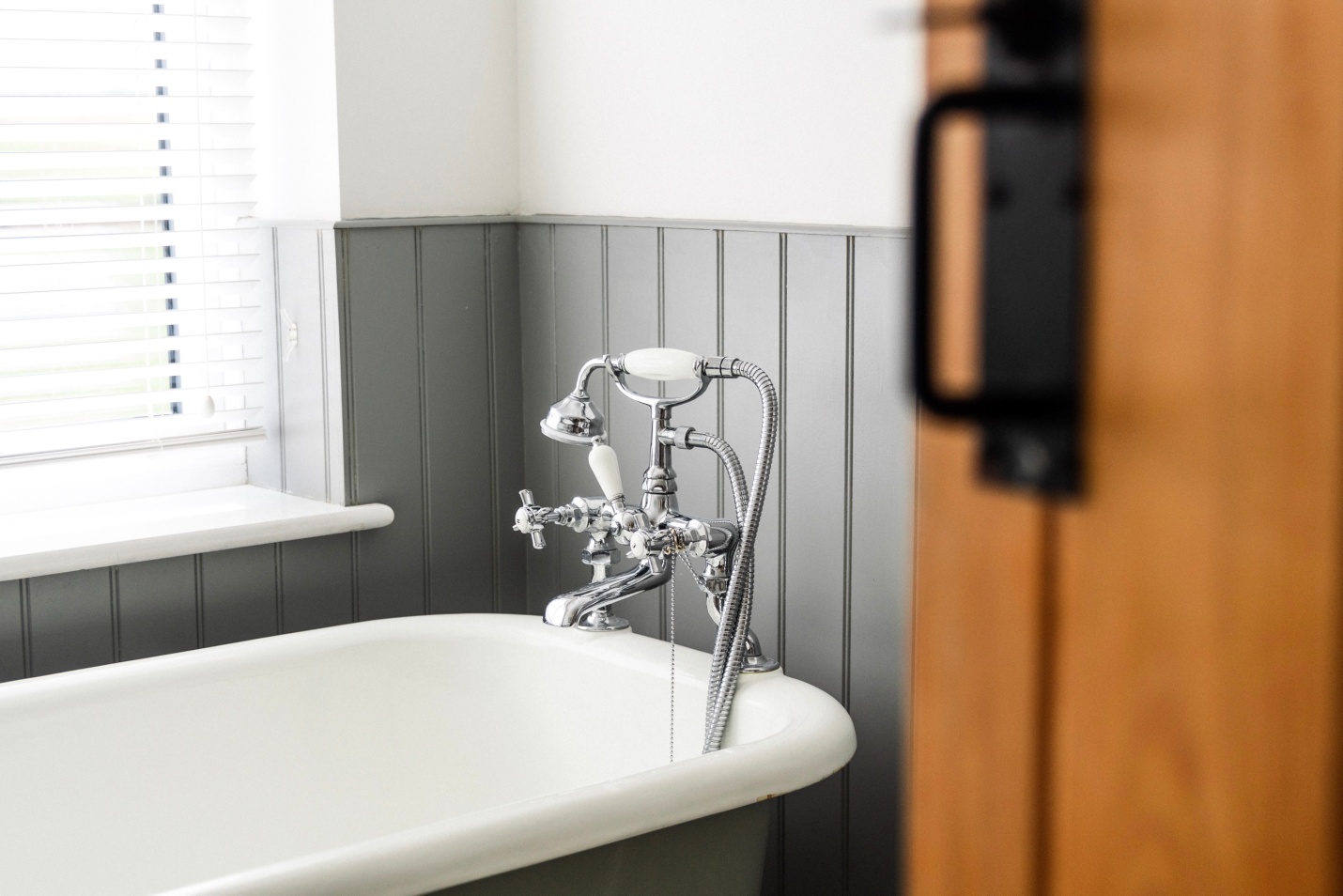How Do You Remove Hard Water Spots & Lime?

Unless you’re truly obsessive about cleaning your pipes and fixtures, it’s likely that they’ll start to develop hard water spots, stains, lime deposits, and other signs of wear over time. The good news is that even especially bad cases can be cleaned away with the proper methods.
What Is Hard Water, Anyway?
“Hard” water is a term that refers to water that contains especially high amounts of minerals. Hard water is formed naturally as groundwater moves through various types of mineral deposits, such as limestone and chalk. As a result, the water picks up compounds containing calcium, magnesium, and other elements.
Although hard water is perfectly natural and may even provide valuable minerals through drinking water, it can cause a variety of problems when it’s used in a home or commercial plumbing. In addition to the spots and stains discussed here, hard water can build up in appliances, reduce water heater efficiency, dry out your skin and hair, and exacerbate soap scum.
To combat hard water, many homes and offices have a water softening system. There are various types of water softeners, but most of them use a type of salt to remove the “hard” mineral ions and replace them with “soft” sodium ions. With this exchange, the newly softened water doesn’t leave behind troublesome mineral deposits.
How Hard Water Creates Spots, Stains, and Lime Buildup
When water evaporates, any compounds that cannot evaporate into a gas will be left behind on the surface beneath it. Salt water, for example, will leave a crusty deposit of crystalline salt when it is boiled down. Similarly, water that contains a high mineral content will leave behind a deposit of minerals when it evaporates. If hard water regularly splashes onto your faucet and is left to dry out on its own, your faucet will be left with splotchy mineral spots where the water used to be.

Hard water stains can also occur in bathroom plumbing fixtures like tubs and toilets when the minerals are deposited at the waterline again and again. This kind of buildup often discolors the area and is much harder to scrape off with normal cleaning methods.
Lime deposits, commonly referred to as “limescale,” tend to be composed mostly of calcium carbonate and can manifest in troublesome ways in water heaters and hot water pipes. As lime builds up in layers inside of pipes, it can restrict water flow in ways that can lead to clogged drainpipes, appliance malfunction, and other issues requiring professional plumbing repair.
Removing Hard Water Spots and Limescale
Because mineral deposits are physically hard and can become quite thick over time, removing them often requires more than just physical effort to break down the structure of the buildup. There is a variety of cleaning chemicals available on the market for hard water stains and lime deposits. If need be, you can also contact companies that offer power washing services in your area to get rid of them.
Vinegar for Surface Spots on Faucets and Hardware
To remove unsightly surface spots and restore the shine of your hardware:
- Soak a sufficiently sized rag in undiluted vinegar, and then carefully place it over the faucet, allowing it to cling tightly to the areas covered with hard water spots.
- Allow the vinegar rag to sit for 30 minutes to an hour. Over time, the vinegar will break down the tough mineral deposits on the surface of the metal without damaging the fixture itself. Naturally, the worse the buildup is, the longer you’ll want to let it sit.
- When enough time has passed, remove the vinegar-soaked rag and begin using a soft sponge to rub away the buildup.
- If spots remain, repeat the process until all the deposits have been broken down and removed.
Vinegar Soak for Aerators, Sprayers, and Shower Heads
To improve spray pressure and restore the look of hardware:
- Soak the affected parts in a sufficient amount of vinegar for 30 minutes or more (longer for more extensive buildup).
- When you feel the vinegar has had enough time to work, use a toothbrush or another small-bristle brush to scrub the head and get into the holes of the hardware.
- Rinse and examine the part. If there are still mineral deposits clogging the spray head or staining the outside, place it in a fresh container of vinegar and allow it to soak again.
Vinegar and Baking Soda for Toilet and Tub Stains

To remove unsightly discoloring stains from bathtubs and toilet bowls:
- Add a cup of baking soda to toilet or tub water, followed by 1-2 cups of vinegar. It will fizz up, creating a foam that will sit at the waterline (which should be roughly around the area of the buildup).
- Let it sit for 10 minutes, and then swish it around with a toilet brush. Do not flush!
- Let it sit for another half hour or so, swishing it around occasionally.
- Scrub away any remaining buildup with the toilet brush.
- Finally, rinse the toilet bowl by flushing.
Borax Paste for Really Tough Deposits
To combat especially stubborn mineral buildup:
- Mix half a cup of borax with a small amount of vinegar to create a thick paste.
- Your tub or toilet should be empty of water. For toilets, shut off the water to the fixture and flush to drain the water out of the bowl.
- Apply the paste to the hard water stains. You’ll probably want to use gloves or a tool for this.
- Let the paste sit on the deposits for approximately 15-20 minutes.
- Use a stiff brush (and some elbow grease) to scrub away the stains.
- When finished, you can rinse the paste and debris away. For toilets, turn the water back on, allow the bowl to refill, and then flush to rinse.
When Cleaning Isn’t Enough
Sometimes, no matter how much you try to clean them away, the hard water stains and lime deposits just won’t budge to your satisfaction. There are also some places your scrub brush simply can’t reach-like inside your pipes or water heater. When you’re out of DIY options to combat hard water problems, it’s time to turn to the experts at a trusted plumbing company like ours.
Our professional local plumbers have heavy-duty tools and cleaning agents available to them that can help restore your mineral-encrusted fixtures and plumbing. We can also diagnose related plumbing issues, fix or replace any damaged pipes and fixtures, and get you set up with a reliable water softener. By actively softening your water ahead of time, you can prevent the development of hard water and limescale deposits that could cause you serious problems in the future.
We’ll Make Sure Your Plumbing Is as Good as It Looks
At Christianson Air Conditioning & Plumbing, we offer a wide range of plumbing services to home and business owners throughout central Texas. Whether limescale in your appliances is driving up your energy bill or you need emergency assistance for an overflowing toilet, our trained technicians are available to help you 24/7.
To learn more or find out if we can help you with your specific issues, contact us online today! If you need emergency service, call us at the location nearest you.
Austin
(512) 246-5400
San Antonio
(210) 651-1212
Temple
(254) 773-7175
New Braunfels
(830) 627-2211



Sorry, comments for this entry are closed at this time.